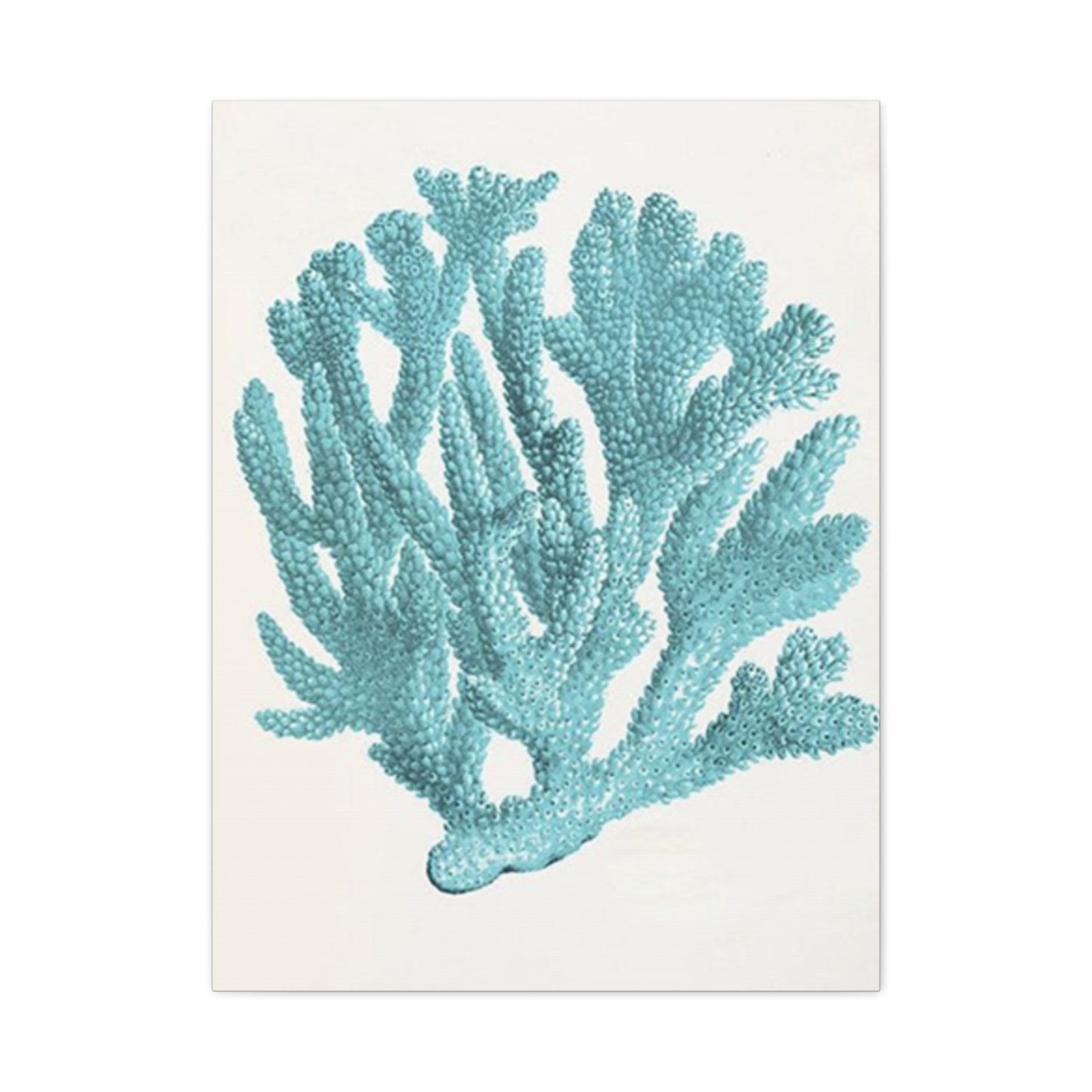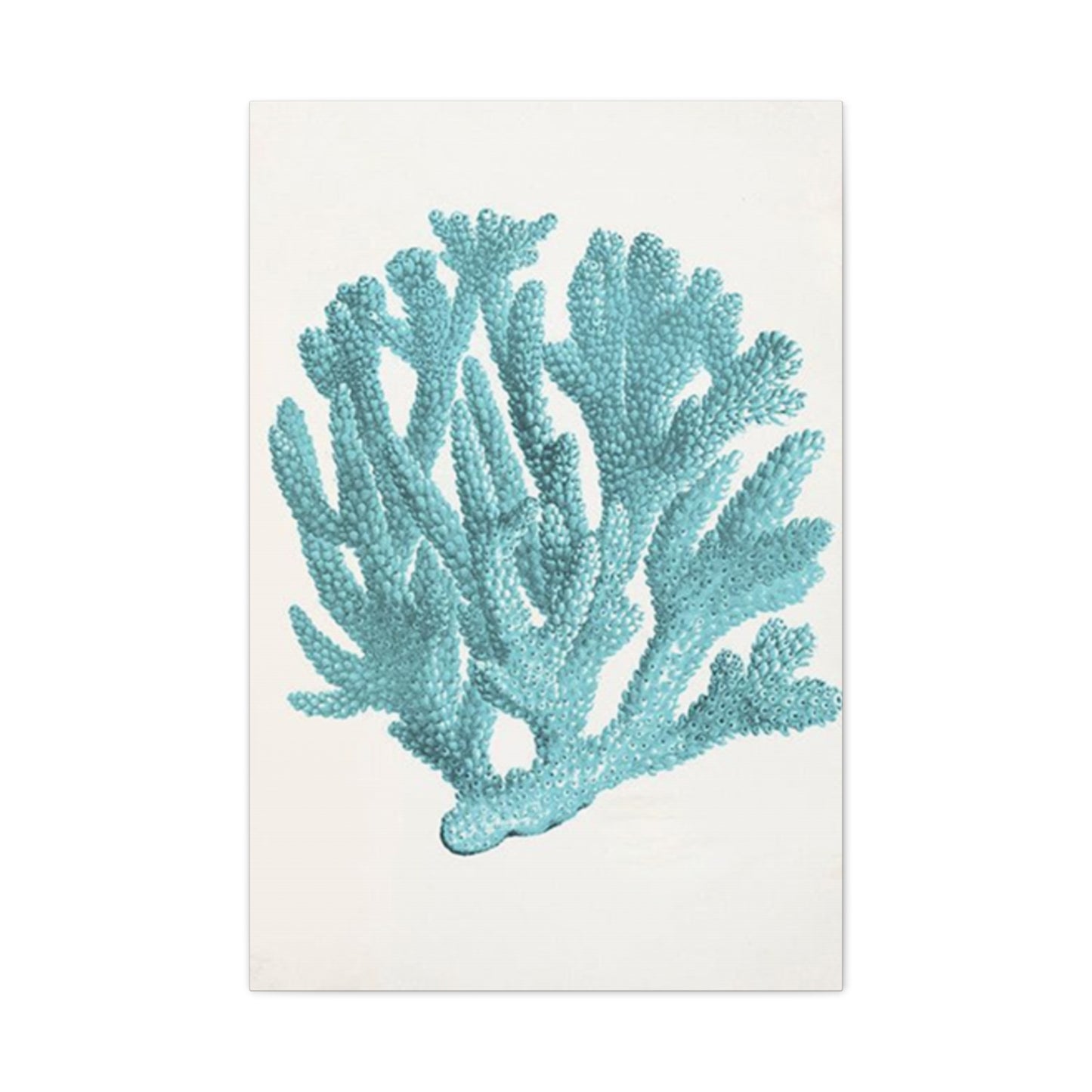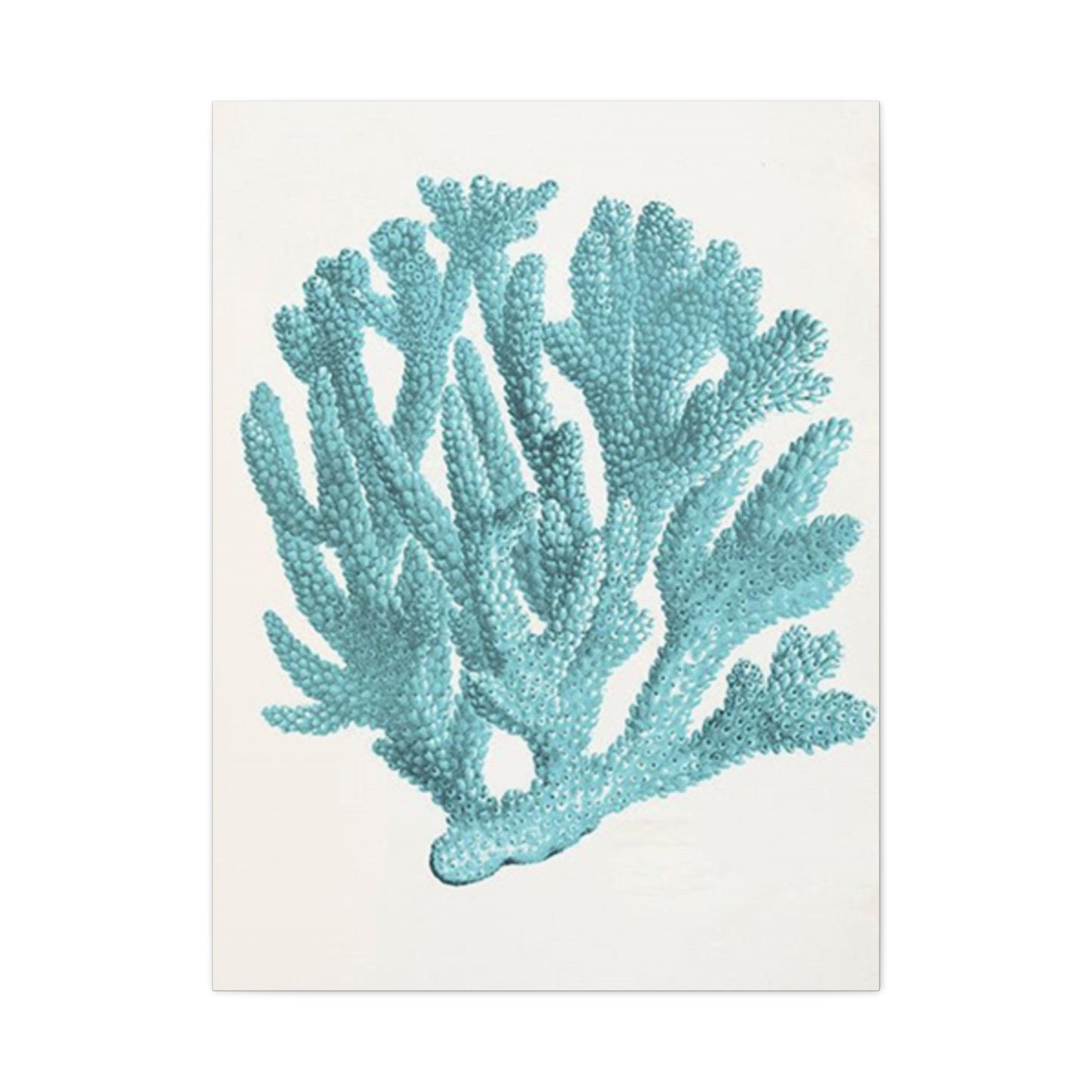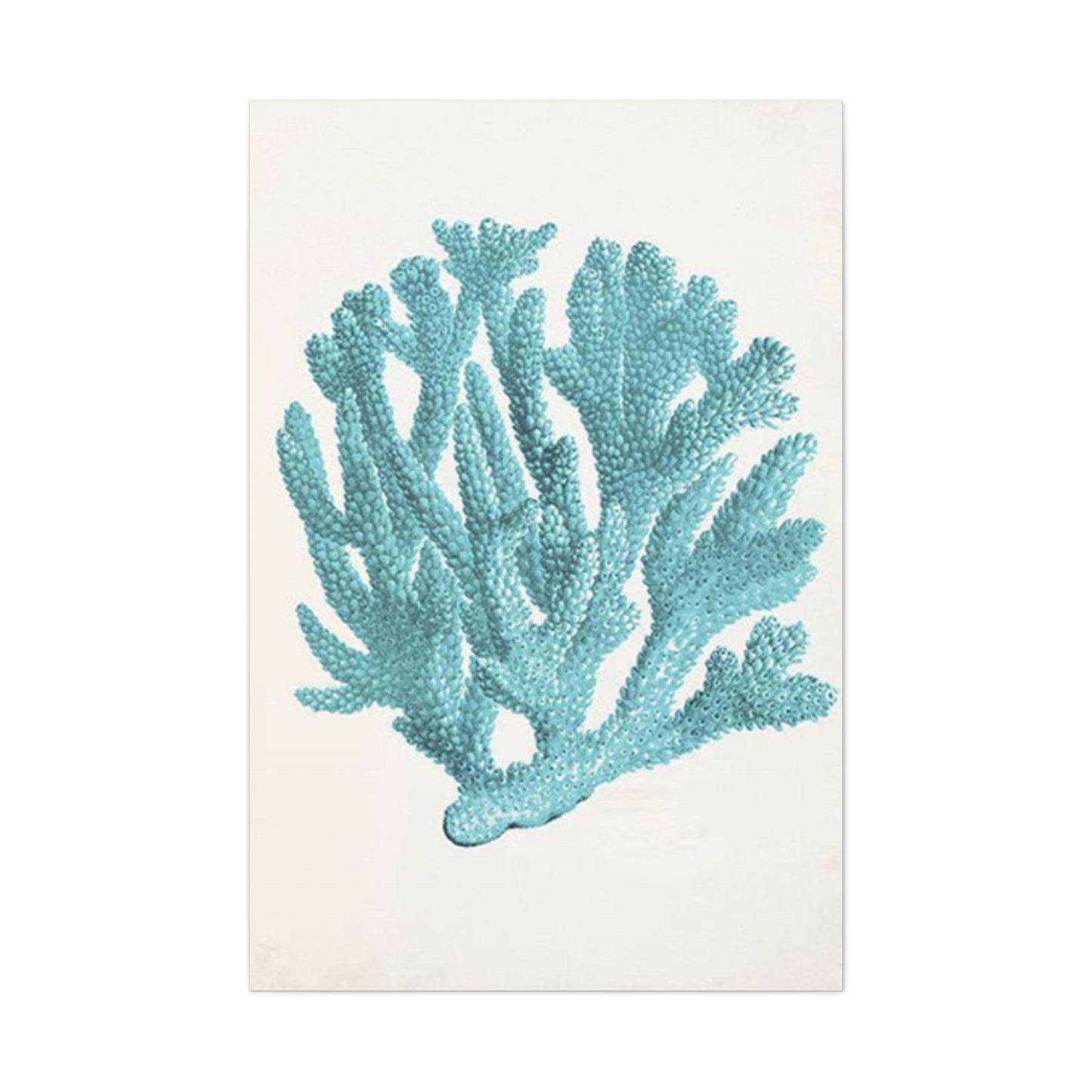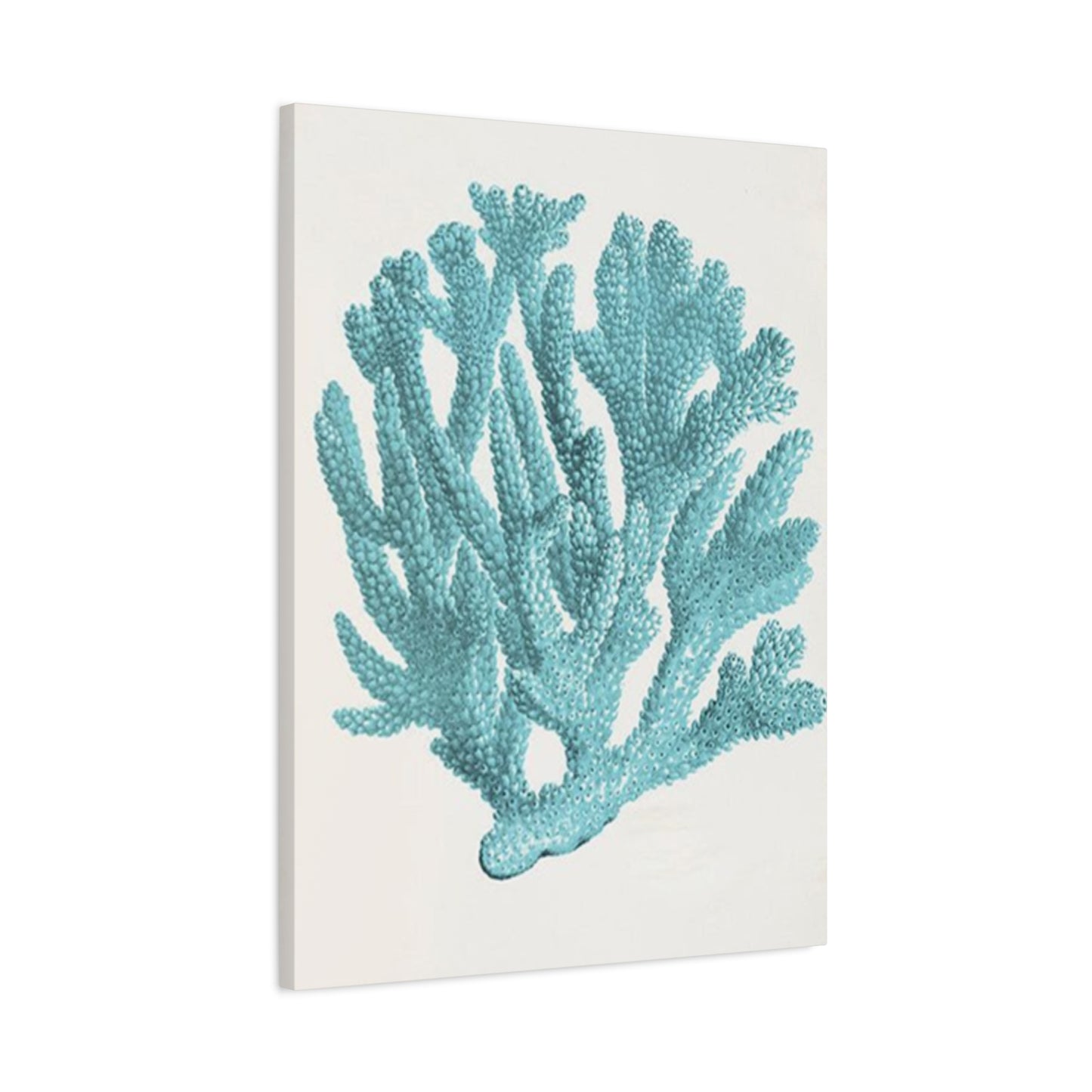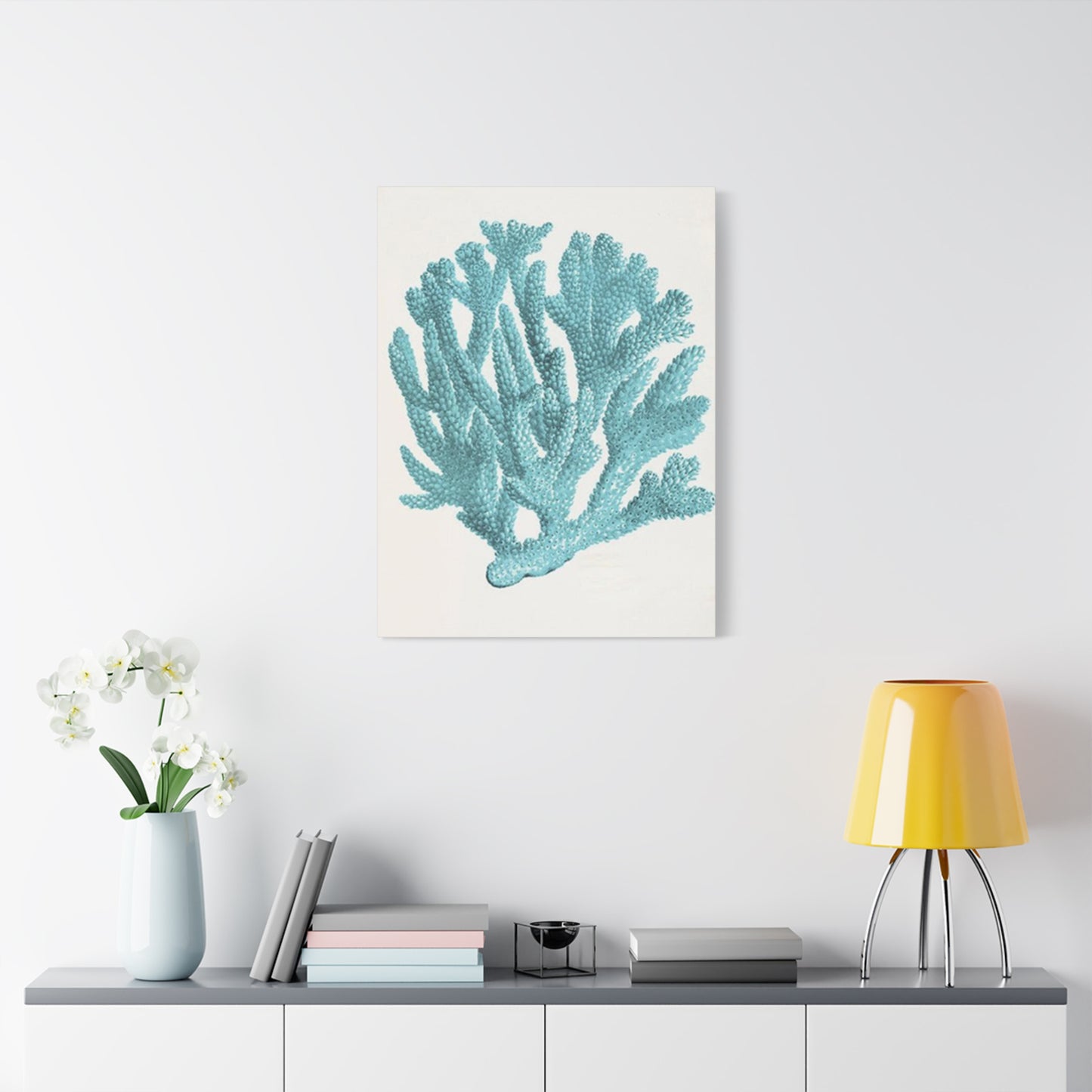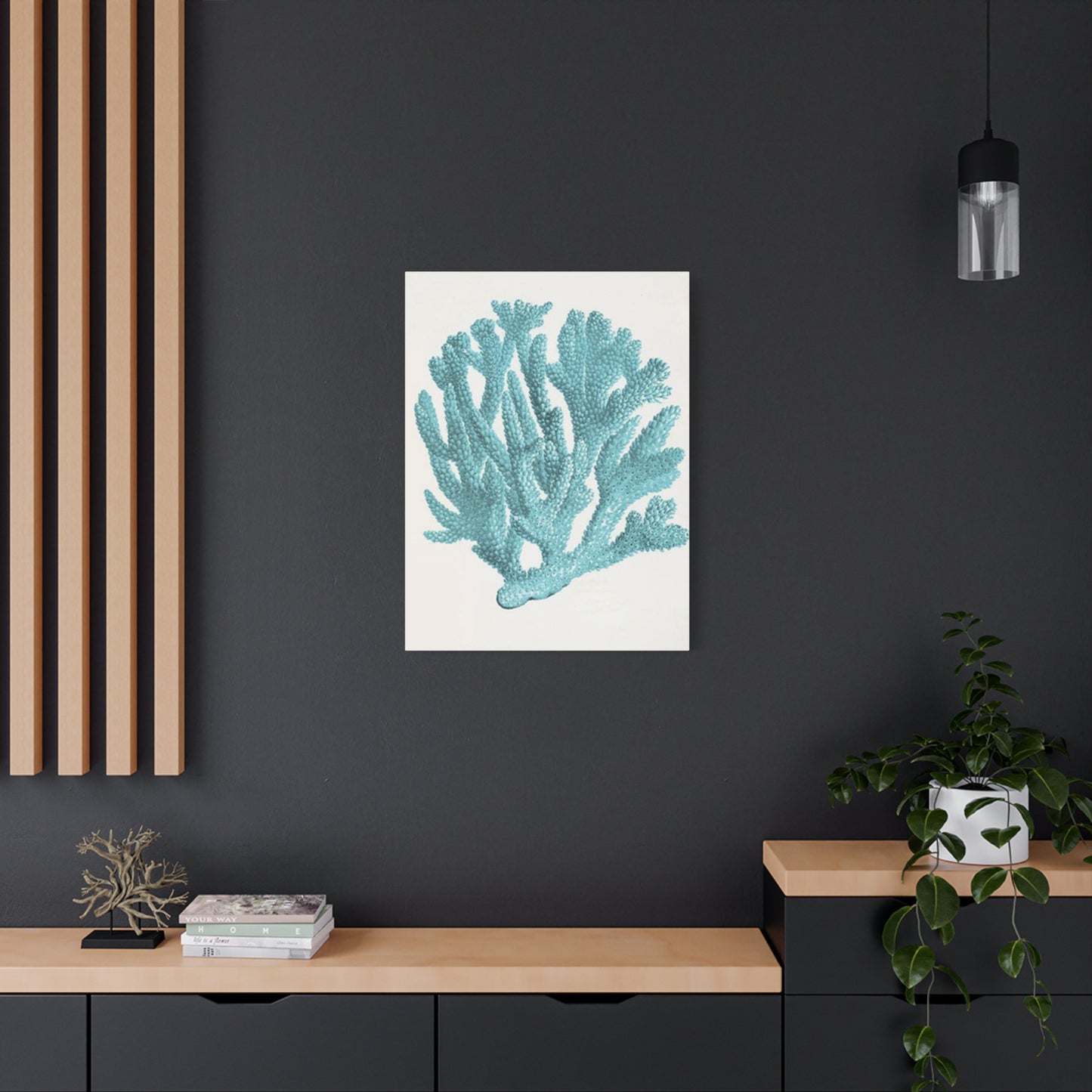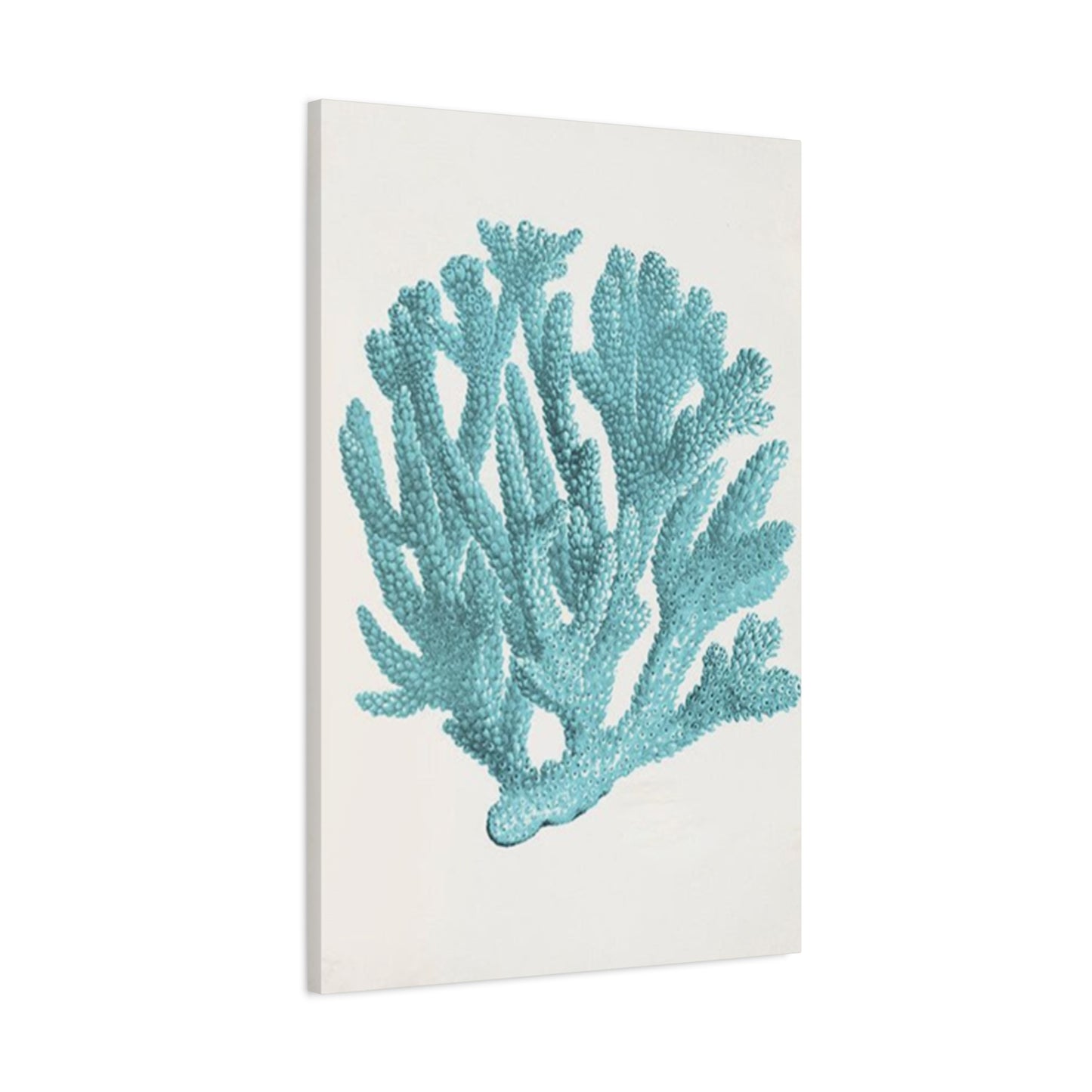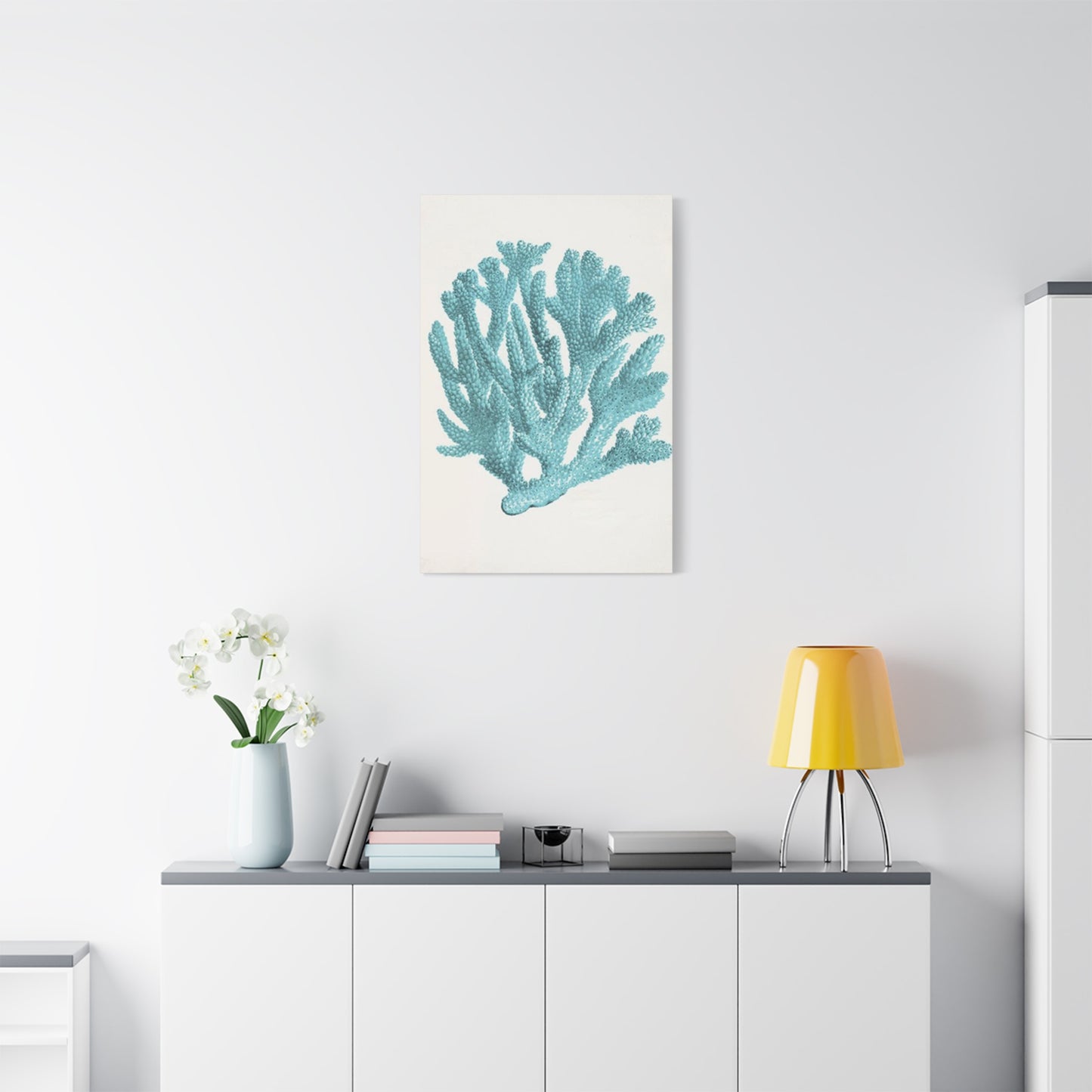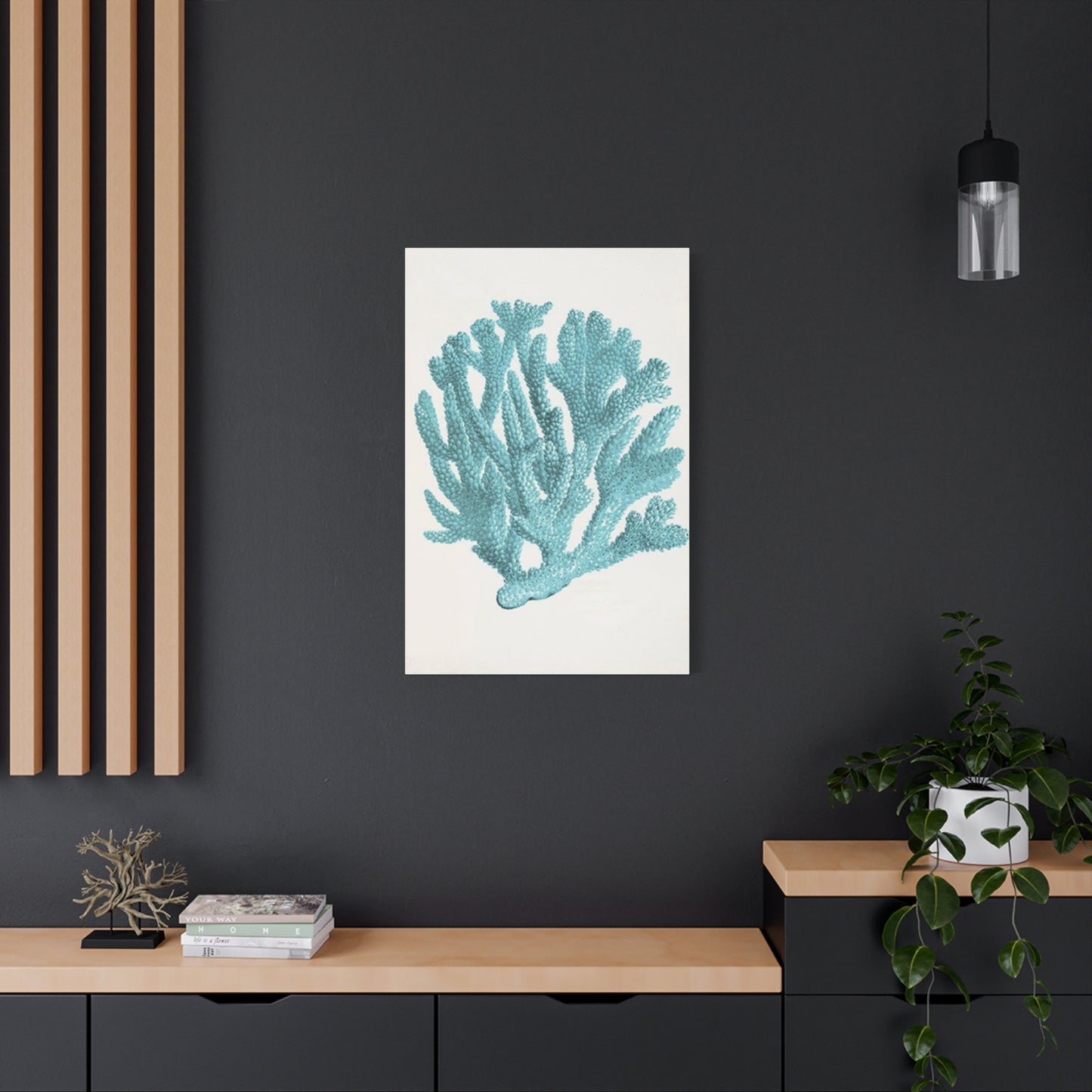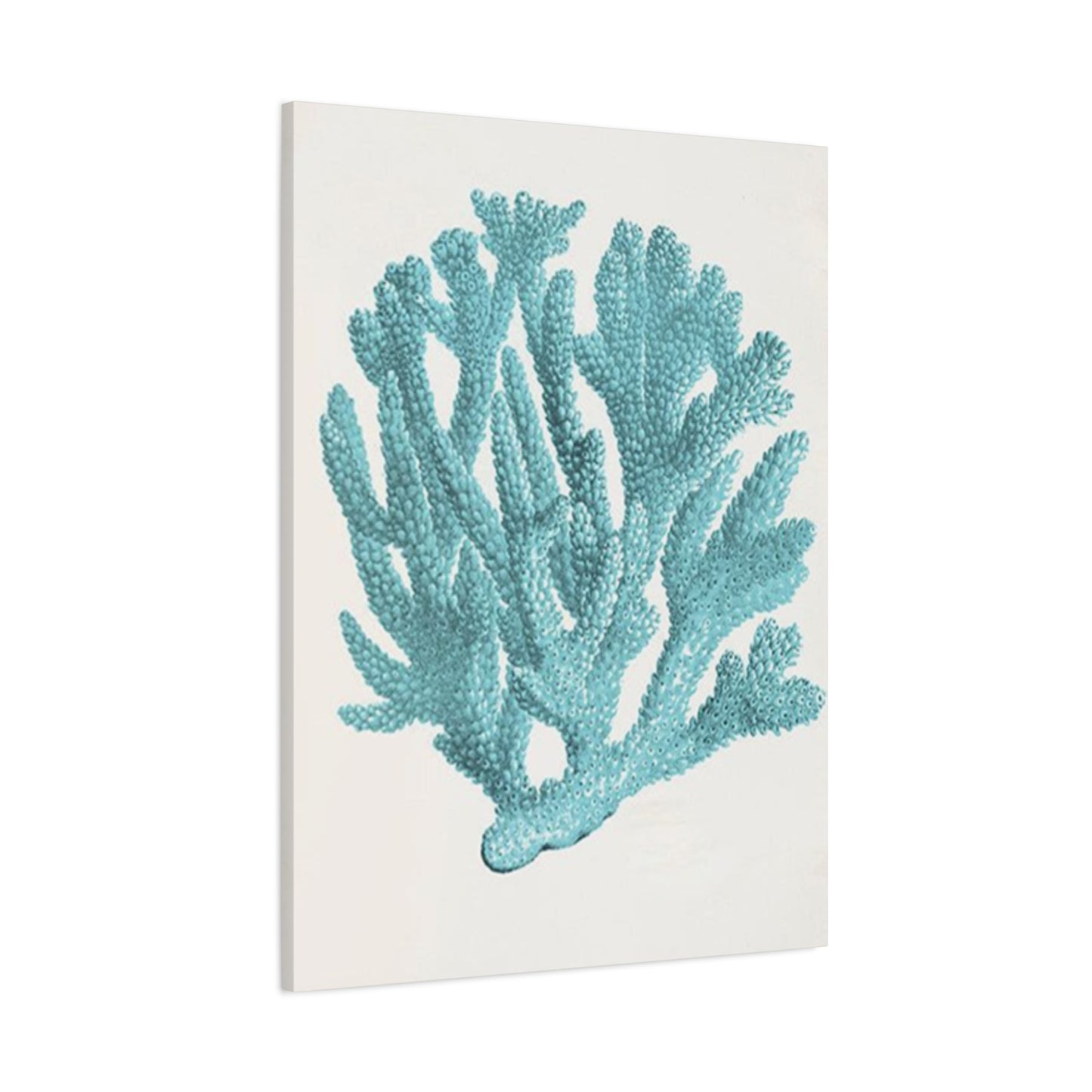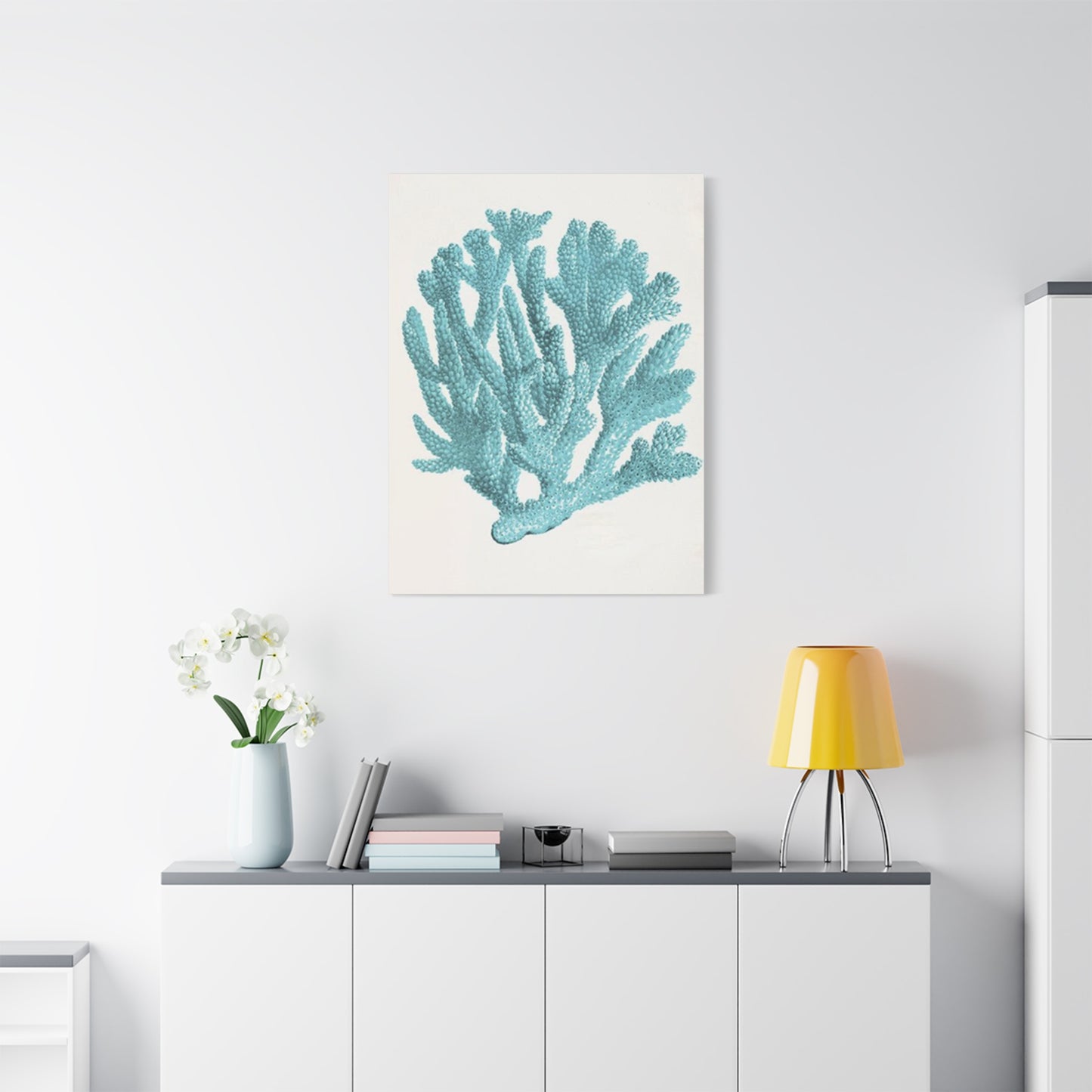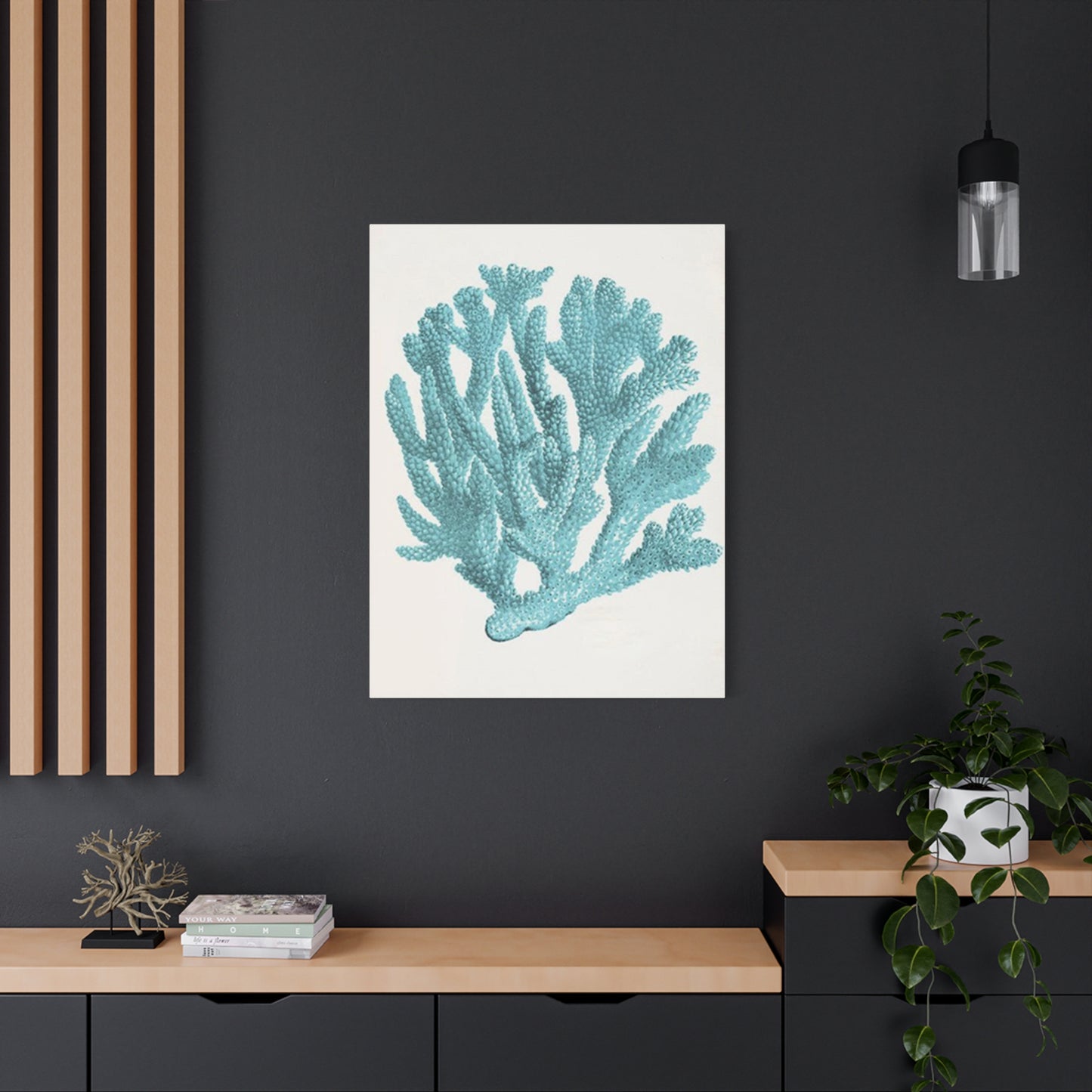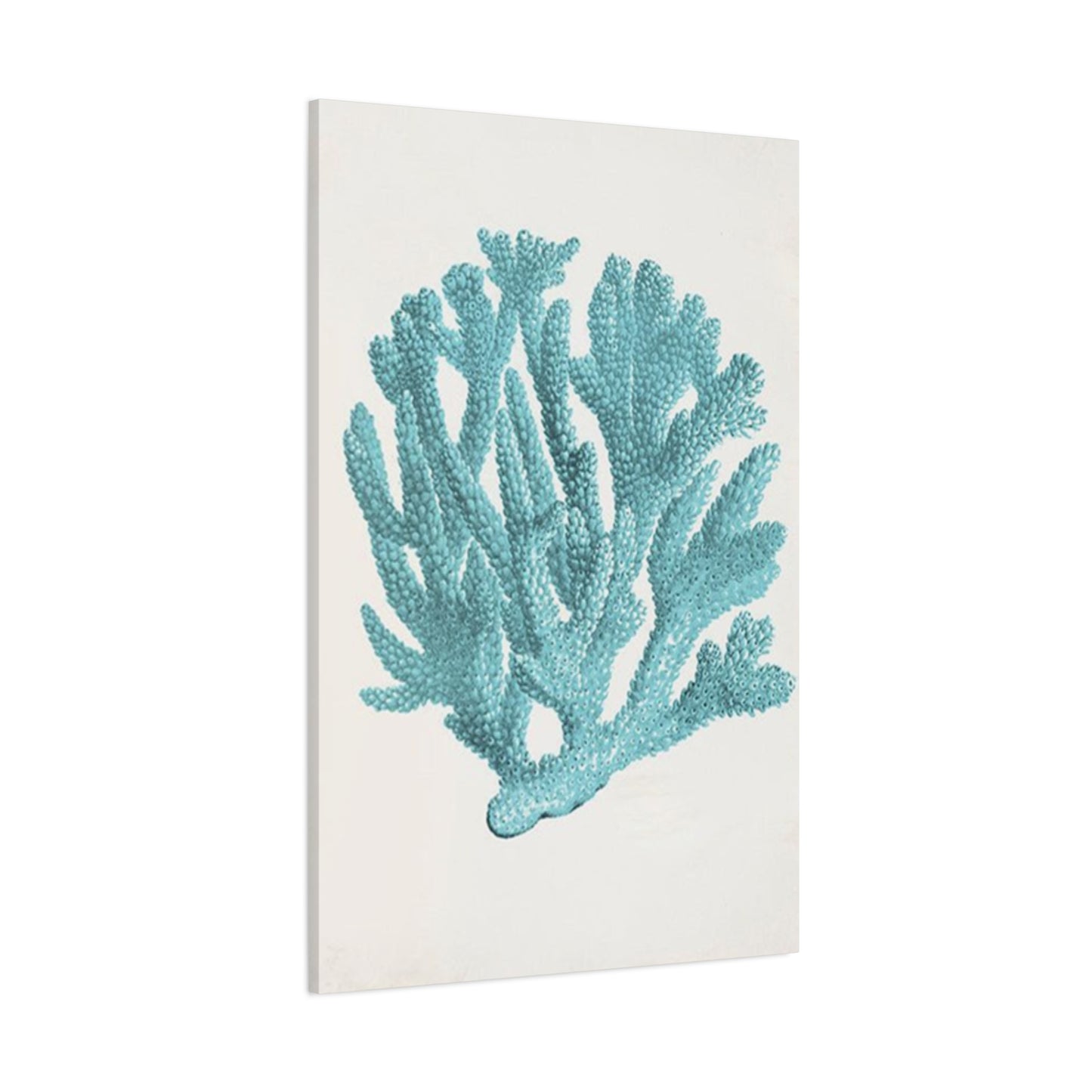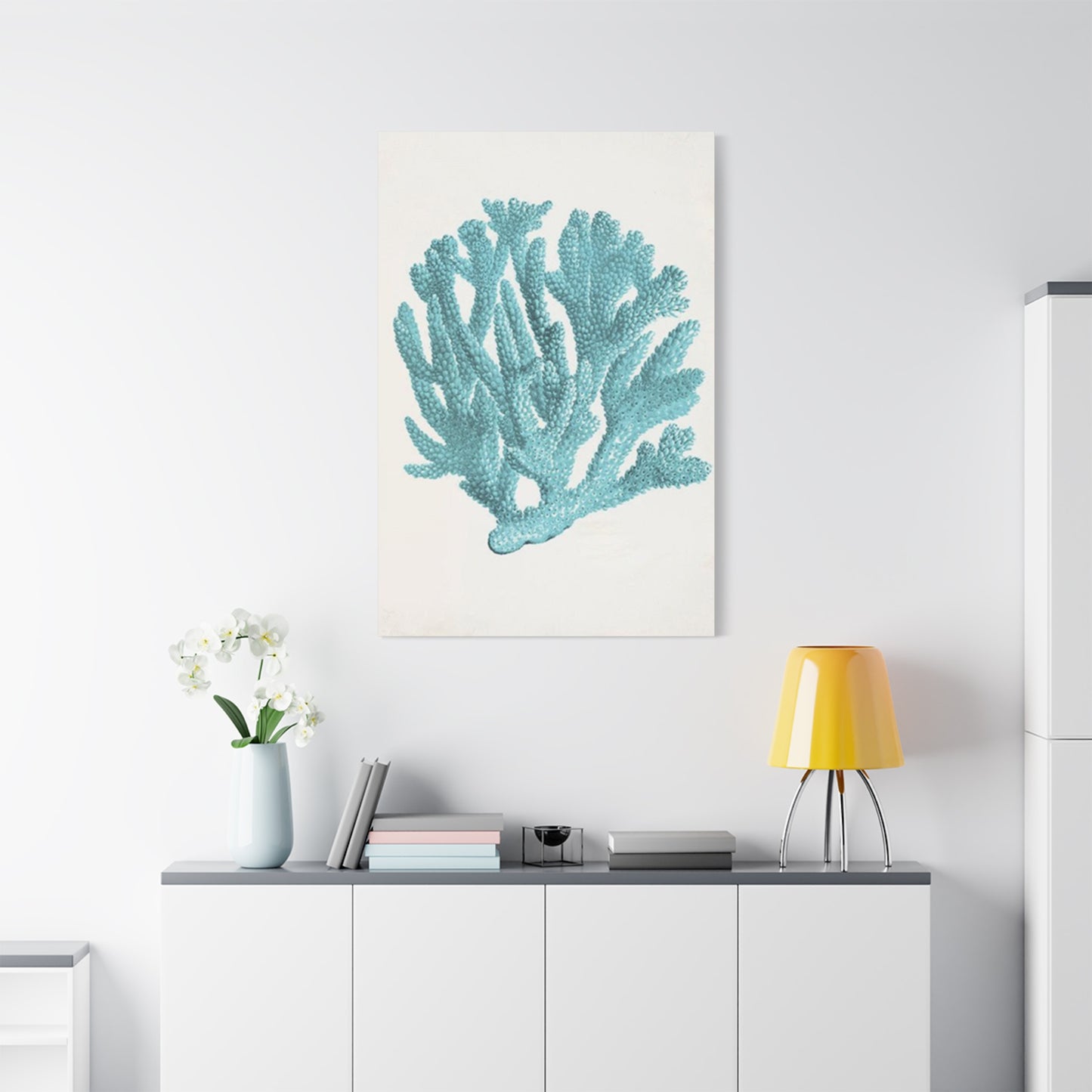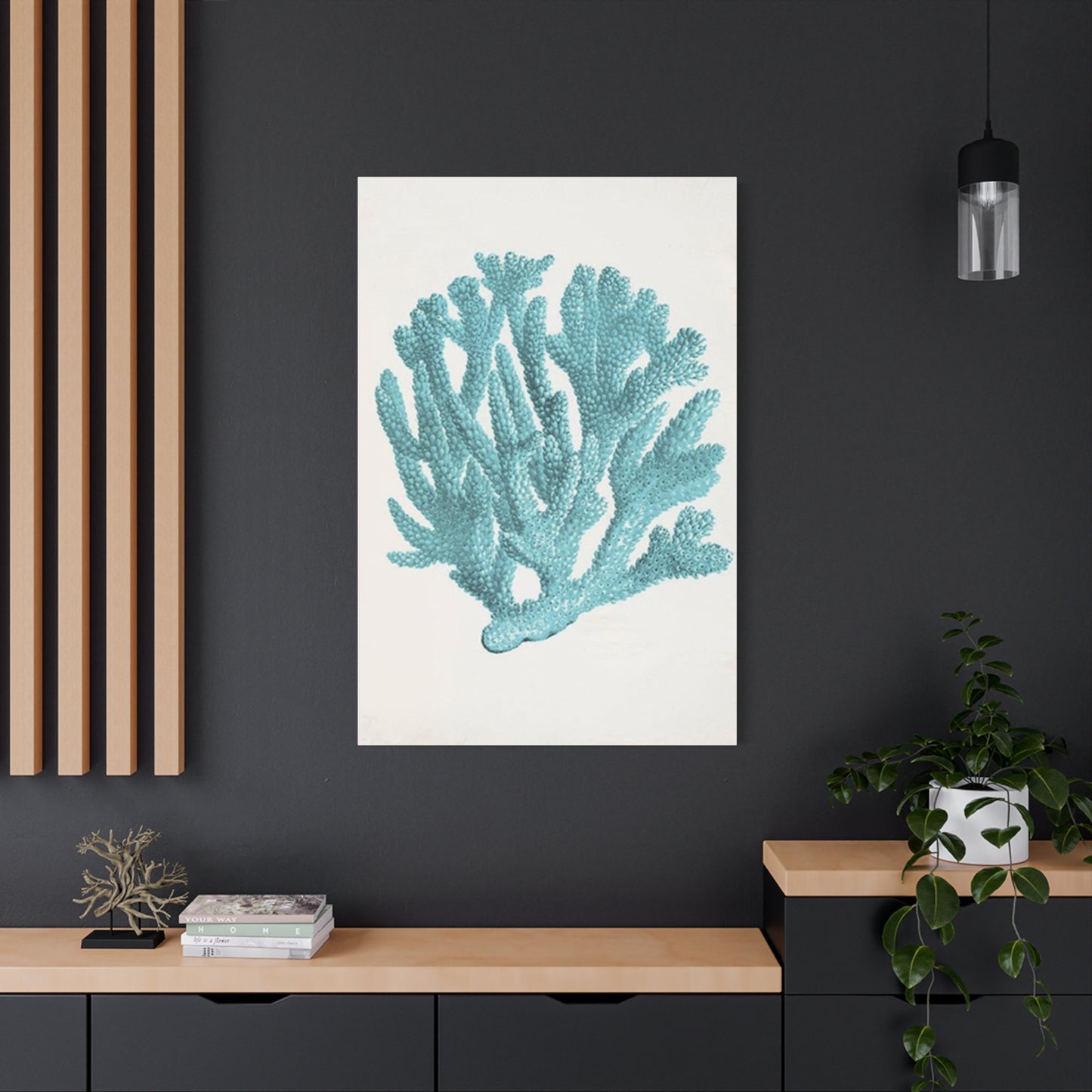Healing Power of Nature: Why Blue Sea Herb Wall Art Soothes the Soul
The intersection of botanical artistry and maritime aesthetics has created a captivating design movement that transforms ordinary living spaces into tranquil sanctuaries. Blue sea herb botanical art represents more than mere decoration; it embodies a lifestyle choice that celebrates the harmonious relationship between terrestrial flora and oceanic beauty. This artistic genre captures the essence of coastal environments where herbs and plants thrive in salt-kissed air, creating visual narratives that speak to our deepest connections with nature.
Contemporary interior design has witnessed an unprecedented surge in demand for artwork that bridges the gap between natural elements and sophisticated aesthetics. Blue sea herb botanical art fulfills this requirement by offering pieces that are simultaneously grounding and ethereal, combining the medicinal and culinary properties of herbs with the infinite calm of ocean blues. These artworks serve as windows to imaginary coastal gardens where rosemary mingles with sea spray, where lavender fields meet horizon lines, and where the therapeutic properties of plants merge with the healing power of water.
The popularity of this art form stems from its ability to create spaces that promote wellness and tranquility. In our increasingly digital world, people seek connections to natural elements that can restore balance and provide visual respite from urban environments. Blue sea herb botanical art answers this call by incorporating scientific botanical accuracy with artistic interpretation, creating pieces that educate while they inspire. Each artwork tells a story of adaptation, resilience, and beauty, reflecting how plants have evolved to thrive in coastal environments where land meets sea.
Artists working in this medium draw inspiration from actual coastal ecosystems, studying how salt-tolerant herbs like sea lavender, marsh rosemary, and beach grass create natural compositions along shorelines. They observe how morning light filters through these plants, how shadows dance across their leaves, and how colors shift from deep forest greens to pale sage as plants adapt to saline conditions. This observational foundation ensures that each piece maintains botanical integrity while achieving artistic excellence.
The therapeutic benefits of incorporating blue sea herb botanical art into living spaces extend beyond mere aesthetic pleasure. Research in environmental psychology demonstrates that exposure to natural imagery, particularly botanical subjects, can reduce stress hormones, lower blood pressure, and improve overall mental well-being. The addition of blue tones amplifies these benefits, as blue is scientifically proven to promote calmness and reduce anxiety. When combined with the symbolic healing properties associated with herbs, these artworks create powerful tools for environmental wellness.
Commercial spaces have also embraced this artistic movement, with restaurants, spas, hotels, and healthcare facilities incorporating blue sea herb botanical art to create atmospheres that promote relaxation and healing. The versatility of this art form allows it to complement various design styles, from minimalist Scandinavian interiors to rustic farmhouse aesthetics, making it an invaluable resource for professional designers and homeowners alike.
Exploring the Artistic Heritage of Botanical Line Art
The tradition of botanical line art traces its origins to ancient civilizations where detailed plant drawings served both scientific and artistic purposes. Early botanists and naturalists developed techniques for capturing plant structures with precise linear elements, creating documentation that was both accurate and beautiful. This historical foundation provides the technical framework for contemporary blue sea herb line art, which honors traditional methods while incorporating modern aesthetic sensibilities.
Medieval herbalists created intricate drawings of medicinal plants, often incorporating symbolic elements that reflected their understanding of plant properties and uses. These historical precedents established the connection between artistic representation and practical knowledge that continues to influence modern botanical artists. The linear approach to plant illustration allowed for clear communication of structural details while maintaining artistic beauty, a balance that contemporary artists strive to achieve in their blue sea herb compositions.
Renaissance botanical illustration reached new heights of sophistication as artists like Leonardo da Vinci and Albrecht Dürer elevated plant drawing to fine art status. Their detailed studies of plant anatomy and growth patterns established principles that modern botanical artists continue to reference. The precision required for botanical line art developed observational skills that translated into more accurate and expressive artwork, creating a foundation for the scientific accuracy that characterizes quality blue sea herb line art today.
The development of printing technologies in subsequent centuries democratized access to botanical illustrations, allowing wider audiences to appreciate the beauty of plant life through artistic representation. This accessibility factor continues to influence the popularity of botanical art, as reproductions make high-quality blue sea herb line art available to collectors and decorators regardless of budget constraints. The linear nature of these works translates particularly well to various printing methods, maintaining clarity and impact across different sizes and mediums.
Contemporary botanical line artists working with blue sea herb themes draw from this rich historical tradition while incorporating modern understanding of coastal ecosystems and plant adaptation strategies. They study how historical botanical illustrators captured the essence of plants through linear elements, then apply these techniques to create compositions that celebrate the unique characteristics of coastal herbs. This approach results in artworks that maintain scientific accuracy while achieving contemporary aesthetic appeal.
The minimalist aesthetic of line art particularly suits the representation of herbs, whose often simple forms and delicate structures are enhanced rather than overwhelmed by linear treatment. Blue sea herb line art capitalizes on this natural compatibility, using clean lines to define plant structures while incorporating subtle color variations that suggest coastal environments. This restraint in technique allows viewers to focus on the inherent beauty of plant forms while appreciating the skill required to capture their essence through minimal means.
Modern botanical line artists often work from life, spending time in coastal environments to understand how herbs grow and adapt to maritime conditions. This direct observation informs their artistic choices, ensuring that each line contributes to both botanical accuracy and artistic impact. The resulting artworks demonstrate deep understanding of plant structures while maintaining the visual clarity that makes line art so appealing to contemporary audiences.
Digital technologies have expanded possibilities for botanical line artists, allowing them to experiment with different line weights, textures, and color applications while maintaining the essential character of traditional line art. These tools enable artists to create blue sea herb line art that captures the subtlety of coastal light and the delicate nature of herb foliage with unprecedented precision. The ability to refine and adjust digital artwork ensures that each piece achieves optimal balance between scientific accuracy and artistic expression.
Canvas Prints and Contemporary Wall Decoration
The evolution of canvas printing technology has revolutionized how botanical art reaches contemporary audiences, making high-quality reproductions accessible to a broader market while maintaining the visual impact of original artworks. Coastal herb canvas prints represent a significant segment of the botanical art market, offering consumers museum-quality reproductions that capture the subtle color variations and textural details essential to effective blue sea herb artwork.
Modern canvas printing utilizes archival inks and high-resolution imaging to ensure that reproductions maintain color accuracy and detail clarity over extended periods. This technological advancement allows coastal herb canvas prints to preserve the delicate color transitions that characterize quality botanical art, from the deep sage greens of salt-adapted foliage to the ethereal blues that suggest maritime environments. The durability of contemporary canvas materials ensures that these prints remain vibrant and structurally sound for decades, making them worthwhile investments for long-term interior design projects.
The texture of canvas adds dimensional quality to blue sea herb prints that flat paper reproductions cannot achieve. The subtle tooth of canvas interacts with printed inks to create visual depth that enhances the natural textures suggested in botanical artwork. This three-dimensional quality particularly benefits herb illustrations, where the representation of leaf surfaces, stem structures, and flower details requires subtle textural variations to achieve realistic effects.
Gallery-wrapped canvas prints offer additional advantages for coastal herb artwork, eliminating the need for traditional framing while creating clean, contemporary presentations suitable for modern interiors. The wraparound printing technique ensures that artwork extends to canvas edges, creating seamless installations that maximize visual impact while minimizing installation complexity. This approach particularly suits large-format blue sea herb prints where uninterrupted expanses of artwork create immersive environments.
Custom sizing options available through modern printing services allow coastal herb canvas prints to be tailored to specific interior requirements, ensuring optimal integration with existing design elements. This flexibility enables designers and homeowners to create cohesive installations that complement architectural features while maintaining appropriate scale relationships. The ability to produce prints in non-standard dimensions opens possibilities for creative installations that maximize the impact of blue sea herb artwork.
Professional mounting and stretching services ensure that coastal herb canvas prints maintain structural integrity while achieving optimal presentation quality. Proper tensioning prevents sagging and distortion that could compromise artwork appearance, while acid-free mounting materials prevent deterioration that could affect long-term durability. These professional services ensure that blue sea herb canvas prints maintain gallery-quality appearance throughout their lifespan.
The versatility of canvas prints allows coastal herb artwork to adapt to various installation environments, from residential living spaces to commercial applications. The durability of canvas materials makes these prints suitable for high-traffic areas where paper-based artwork might be impractical, while their resistance to humidity changes makes them appropriate for coastal installations where environmental conditions might challenge less robust materials.
Color matching technologies ensure that coastal herb canvas prints accurately reproduce the subtle color relationships essential to effective botanical artwork. Advanced color management systems maintain consistency across multiple prints, enabling designers to create series installations with confidence in color uniformity. This technical precision ensures that blue sea herb canvas prints maintain the color harmony that makes botanical art so visually appealing.
Wall Decor and Spatial Transformation
The strategic placement of blue sea herb wall decor can fundamentally transform spatial perception and emotional atmosphere within interior environments. Understanding how botanical artwork interacts with architectural elements, lighting conditions, and existing design components enables optimal integration that maximizes both aesthetic impact and psychological benefits. Professional interior designers recognize that coastal herb wall decor functions as more than decorative elements; they serve as focal points that guide visual flow and create emotional anchors within living spaces.
Scale relationships between blue sea herb wall decor and surrounding architectural features determine the success of installation projects. Oversized botanical prints can create dramatic focal points in spacious rooms while smaller groupings of herb artwork can add intimate detail to cozy spaces. The key lies in understanding how artwork size relates to wall dimensions, ceiling height, and furniture placement to achieve balanced compositions that enhance rather than overwhelm spatial characteristics.
Color coordination between coastal herb wall decor and existing interior palettes requires careful consideration of undertones and color temperatures. Blue sea herb artwork naturally incorporates cool tones that can balance warm interior colors while complementing neutral palettes without creating visual conflict. Professional color analysis ensures that botanical wall decor enhances existing design elements rather than competing for visual attention, creating harmonious environments that promote relaxation and well-being.
Lighting design plays a crucial role in maximizing the impact of blue sea herb wall decor, as proper illumination can enhance color saturation, reveal textural details, and create depth within two-dimensional artwork. Natural light sources should be considered when positioning botanical prints to avoid direct sunlight that could cause fading while maximizing the benefits of diffused daylight that enhances color perception. Artificial lighting systems can be designed to highlight specific artwork features while maintaining overall ambient illumination levels.
Grouping strategies for multiple pieces of coastal herb wall decor require understanding of visual rhythm, spacing relationships, and thematic coherence. Series installations can create powerful visual narratives while maintaining individual artwork integrity, requiring careful attention to spacing intervals and alignment principles. Mixed-media groupings that combine different sizes and formats of blue sea herb artwork can create dynamic installations that maintain visual interest without appearing chaotic.
The psychological impact of blue sea herb wall decor extends beyond immediate aesthetic pleasure to influence long-term environmental satisfaction and emotional well-being. Research in environmental psychology demonstrates that exposure to botanical imagery can reduce stress responses while promoting cognitive restoration and creative thinking. The incorporation of blue tones amplifies these benefits by triggering associations with calm water and open skies, creating environments that support both relaxation and productivity.
Maintenance considerations for coastal herb wall decor include protection from environmental factors that could compromise artwork longevity and appearance quality. Proper humidity control, temperature stability, and protection from direct sunlight ensure that blue sea herb prints maintain color accuracy and structural integrity over time. Regular cleaning protocols using appropriate materials and techniques preserve artwork appearance while preventing accumulation of dust and airborne contaminants.
Installation techniques for blue sea herb wall decor must accommodate various wall surfaces and structural considerations while ensuring secure mounting that prevents damage to both artwork and architectural features. Professional installation services provide expertise in weight distribution, wall anchoring, and alignment precision that ensures optimal presentation quality while protecting valuable artwork investments. Proper installation techniques also facilitate future repositioning or removal without damage to walls or artwork.
Ocean-Inspired Drawing Techniques and Artistic Methods
The creation of authentic ocean-inspired herb drawings requires sophisticated understanding of how coastal environments influence plant growth patterns, color development, and structural adaptations. Artists working in this specialized field must master techniques that capture the unique characteristics of herbs that thrive in maritime conditions while conveying the atmospheric qualities that define coastal landscapes. This technical mastery combines traditional botanical illustration methods with innovative approaches that reflect contemporary understanding of coastal ecosystems.
Observational drawing forms the foundation of quality ocean-inspired herb artwork, requiring artists to spend significant time studying plants in their natural coastal habitats. Direct observation allows artists to understand how salt spray affects leaf surfaces, how constant winds influence growth patterns, and how intense sunlight creates unique color variations in coastal herbs. This fieldwork provides essential reference material that ensures botanical accuracy while inspiring artistic interpretation that captures the essence of coastal plant life.
Linear techniques specific to ocean-inspired herb drawings emphasize the structural elements that define plant architecture while suggesting the environmental forces that shape coastal vegetation. Artists develop specialized approaches to rendering the often simplified forms that result from wind exposure and salt adaptation, using line weight variations to suggest both delicate plant structures and the resilience required for coastal survival. These techniques require careful balance between botanical accuracy and artistic expression.
Color theory applications in ocean-inspired herb drawings demand understanding of how maritime light conditions affect color perception and how salt exposure influences plant pigmentation. Coastal light tends to be brighter and more reflective than inland conditions, creating unique color relationships that artists must understand to create convincing coastal herb artwork. The prevalence of blue tones in coastal environments requires sophisticated color mixing techniques to achieve harmonious palettes that suggest oceanic influences.
Textural rendering techniques for ocean-inspired herb drawings must capture the often unique surface characteristics that develop in plants adapted to coastal conditions. Salt crystallization on leaf surfaces, the waxy coatings that protect against salt spray, and the often succulent nature of coastal herbs require specialized approaches that convey these distinctive features. Artists develop techniques for suggesting these textures without overwhelming the essential plant forms.
Composition strategies for ocean-inspired herb drawings consider how coastal environments create natural groupings and relationships between different plant species. Understanding ecological succession patterns, companion planting relationships, and natural spacing distributions helps artists create compositions that feel authentic to coastal environments. These ecological principles provide framework for arranging multiple herb subjects within single compositions.
Atmospheric perspective techniques allow artists to suggest the vast spatial relationships characteristic of coastal environments while maintaining focus on botanical subjects. The integration of subtle background elements that suggest ocean proximity without overwhelming foreground plant details requires sophisticated understanding of depth perception and visual hierarchy. These techniques create context for herb subjects while maintaining botanical illustration clarity.
Medium-specific approaches to ocean-inspired herb drawings vary significantly between traditional and digital techniques, each offering unique advantages for capturing coastal plant characteristics. Watercolor techniques excel at capturing the translucent qualities of salt-adapted foliage, while pen and ink methods provide the precision necessary for detailed structural rendering. Digital approaches offer unlimited experimentation possibilities while maintaining the ability to achieve both traditional and innovative effects.
Minimalist Approaches to Blue Herb Artwork
The minimalist aesthetic has found particular resonance in blue herb artwork, where the inherent simplicity of herb forms aligns naturally with design principles that emphasize essential elements while eliminating visual clutter. This artistic approach requires sophisticated understanding of what constitutes the essential character of herb subjects, demanding that artists distill complex botanical structures to their most fundamental and expressive elements. Minimalist blue herb art achieves maximum visual impact through careful selection and precise execution of essential design elements.
Compositional reduction in minimalist blue herb artwork focuses on identifying the single most characteristic feature of each herb subject and building compositions around these defining elements. This might involve emphasizing the delicate branching pattern of sea lavender, the distinctive leaf shape of coastal sage, or the unique flower cluster formation of marsh herbs. The challenge lies in maintaining botanical recognizability while achieving the visual clarity that defines successful minimalist artwork.
Color palette restriction in minimalist blue herb art typically limits selections to a narrow range of blues, whites, and muted greens that suggest coastal environments without overwhelming botanical subjects. This restraint requires sophisticated understanding of color relationships and the ability to create visual interest through subtle variations rather than dramatic contrasts. The limited palette forces artists to rely on composition, form, and texture to create compelling artwork.
Negative space utilization becomes crucial in minimalist blue herb artwork, where empty areas function as active compositional elements that define and enhance botanical subjects. The strategic use of white or pale blue backgrounds can suggest infinite sky or calm water while providing visual rest areas that prevent compositions from becoming visually overwhelming. Understanding how negative space interacts with positive forms enables artists to create powerful statements through minimal means.
Linear economy in minimalist blue herb drawings demands that every line serve multiple purposes, contributing simultaneously to botanical accuracy, compositional structure, and aesthetic appeal. This efficiency requires extensive planning and precise execution, as there are no superfluous elements to mask weaknesses or provide visual distraction. Each mark must be intentional and contribute meaningfully to the overall artistic statement.
Scale relationships in minimalist blue herb artwork often employ dramatic size contrasts to create visual impact through proportion rather than detail complexity. A single large herb form might dominate a composition, creating monumental presence from inherently delicate subject matter. Alternatively, tiny botanical elements might be isolated within expansive fields of blue, creating contemplative compositions that invite close examination.
Textural suggestion in minimalist blue herb art relies on implication rather than explicit rendering, using subtle variations in line quality or color saturation to suggest surface characteristics without detailed description. This approach requires viewers to participate actively in completing visual information, creating more engaging artwork that invites extended contemplation. The suggestion of texture through minimal means demonstrates artistic sophistication and respects viewer intelligence.
Series development in minimalist blue herb artwork often explores variations on single themes, examining how different compositional approaches can reveal different aspects of herb subjects. A series might present the same herb species through varying scales, color temperatures, or compositional arrangements, creating comprehensive explorations that would be impossible within single artworks. This approach allows for deeper artistic investigation while maintaining minimalist principles.
Sketch Wall Prints and Contemporary Art Markets
The growing market for sketch wall prints reflects contemporary preferences for artwork that combines artistic sophistication with accessible pricing, making quality botanical art available to broader audiences while maintaining aesthetic standards that satisfy discriminating collectors. Blue herb sketch wall prints represent a significant segment of this market, offering consumers authentic artistic expression in formats suitable for various interior applications and budget considerations.
Market analysis reveals increasing demand for botanical sketch prints that demonstrate genuine artistic skill while incorporating contemporary design sensibilities. Consumers seek artwork that provides both aesthetic pleasure and educational value, making blue herb sketch prints particularly attractive as they combine botanical accuracy with artistic interpretation. This dual appeal creates opportunities for artists to reach both decorating and educational markets simultaneously.
Production quality standards for sketch wall prints have evolved significantly with advances in digital printing technology, enabling reproduction of subtle line variations and textural details that earlier printing methods could not capture accurately. Contemporary printing processes can reproduce the spontaneous quality of hand-drawn sketches while ensuring consistent quality across multiple prints. This technical capability ensures that blue herb sketch prints maintain artistic integrity regardless of print quantities.
Size format considerations for sketch wall prints must balance artwork detail with practical installation requirements, ensuring that botanical subjects remain clearly readable while fitting standard framing dimensions. Blue herb sketches often work particularly well in medium sizes that allow appreciation of linear details without overwhelming residential spaces. Standard sizing also reduces framing costs and simplifies installation for consumer markets.
Price point strategies for sketch wall prints must consider production costs, market expectations, and perceived value while maintaining profit margins that support artistic careers. Blue herb sketch prints typically occupy middle market positions that make original artistic expression accessible without cheapening artistic value. This pricing strategy encourages broader art appreciation while supporting working artists.
Distribution channels for sketch wall prints have expanded dramatically with online marketplace development, enabling artists to reach global audiences while maintaining direct relationships with collectors. Digital platforms allow for custom printing options, international shipping, and customer communication that traditional gallery systems could not provide. Blue herb sketch prints benefit particularly from online marketing that can target specific interest groups including botanical enthusiasts, coastal lifestyle adherents, and interior design professionals.
Consumer education about sketch wall prints includes information about artistic techniques, botanical accuracy, and proper display methods that help buyers make informed purchasing decisions. Educational content about blue herb subjects adds value by providing context about plant uses, growing conditions, and ecological relationships. This information transforms decorative purchases into learning opportunities that increase customer satisfaction and artwork appreciation.
Quality authentication for sketch wall prints requires clear communication about artistic origins, printing methods, and material specifications that help consumers understand what they are purchasing. Transparency about whether prints reproduce original sketches or represent digital artwork helps establish appropriate price expectations and artistic credibility. Blue herb sketch prints benefit from documentation about botanical accuracy and artistic credentials that validate their educational and aesthetic value.
Botanical Art and Interior Design Integration
The successful integration of blue herb botanical art into interior design projects requires understanding of how artwork functions within broader design contexts, complementing architectural features while supporting overall aesthetic objectives. Professional interior designers recognize that botanical art serves multiple functions beyond decoration, contributing to spatial definition, color coordination, and psychological ambiance that influences occupant well-being and environmental satisfaction.
Style compatibility analysis ensures that blue herb botanical art harmonizes with existing design elements rather than creating visual conflicts that compromise overall interior cohesion. Traditional botanical art adapts well to classic design styles while contemporary interpretations suit modern and transitional interiors. The key lies in understanding how artistic elements relate to furniture styles, architectural details, and decorative accessories to create unified design statements.
Color coordination strategies for blue herb botanical art consider both dominant and accent colors within existing interior palettes, ensuring that artwork enhances rather than competes with established color schemes. The natural blue and green tones typical of coastal herb art provide excellent coordination possibilities with both warm and cool interior colors. Professional color analysis helps determine optimal artwork selections that support desired atmospheric effects.
Scale planning for botanical art installations requires careful consideration of wall dimensions, ceiling heights, and furniture arrangements to achieve appropriate proportional relationships. Blue herb artwork works effectively in various scales, from intimate detailed studies suitable for powder rooms to large dramatic pieces appropriate for main living areas. Understanding scale relationships prevents artwork from appearing either lost within large spaces or overwhelming in smaller rooms.
Lighting design considerations for botanical art include both natural and artificial light sources that can enhance color perception and reveal artwork details without causing damage through excessive exposure. Proper lighting can transform blue herb botanical art into dynamic elements that change character throughout the day while maintaining consistent visual appeal. Professional lighting design ensures optimal artwork presentation while protecting valuable prints from harmful ultraviolet radiation.
Grouping strategies for multiple botanical artworks require understanding of visual rhythm, thematic relationships, and spatial distribution that creates cohesive installations without visual monotony. Series of blue herb artworks can create powerful visual narratives while maintaining individual piece integrity. Mixed groupings combining different botanical subjects require careful curation to ensure thematic coherence and visual balance.
Functional considerations for botanical art integration include durability requirements for different interior environments, maintenance needs, and potential replacement or repositioning requirements. Blue herb artwork intended for high-humidity areas like bathrooms requires appropriate printing materials and protective measures. Understanding these practical requirements ensures that artistic investments provide long-term satisfaction and maintain appearance quality.
Professional installation services for botanical art ensure proper mounting techniques that protect both artwork and architectural surfaces while achieving optimal presentation quality. Proper installation prevents damage from improper mounting while ensuring security and stability that protect valuable artistic investments. Professional services also provide expertise in hanging heights, spacing intervals, and alignment precision that maximizes visual impact.
Natural Canvas and Artistic Medium Selection
The selection of appropriate canvas materials for blue herb botanical art significantly influences both artistic expression possibilities and long-term artwork durability, requiring understanding of how different fabric weaves, priming methods, and sizing treatments affect paint application and color development. Natural canvas materials provide authentic foundations for botanical artwork while offering textural qualities that enhance artistic expression and create connections to natural subject matter.
Cotton canvas remains the most popular natural material for blue herb botanical art due to its fine weave structure, consistent texture, and excellent paint acceptance characteristics. High-quality cotton canvas provides stable dimensional properties that prevent stretching or distortion over time while offering sufficient tooth to hold paint layers securely. The natural fiber content creates subtle textural variations that enhance botanical subjects without overwhelming delicate details.
Linen canvas offers superior durability and longevity for blue herb botanical artwork intended as long-term investments, providing exceptional dimensional stability and paint acceptance that improves with age. The natural irregularities in linen weave create organic textural qualities particularly suited to botanical subjects, while the material's archival properties ensure artwork preservation for generations. Premium linen canvas commands higher prices but provides unmatched quality for serious collectors.
Priming considerations for natural canvas materials include selection of appropriate ground preparations that provide optimal paint adhesion while maintaining desired textural characteristics. Acrylic primers offer excellent adhesion properties and quick drying times while preserving canvas texture, making them suitable for blue herb artwork that requires fine detail capability. Traditional rabbit skin glue and lead white primers provide superior longevity but require more complex application procedures.
Weave selection influences both artistic technique possibilities and final artwork appearance, with fine weaves supporting detailed botanical illustration while coarser textures suit more impressionistic approaches. Blue herb artwork benefits from medium-weight canvas that provides sufficient texture interest without interfering with botanical accuracy requirements. Understanding how weave characteristics interact with painting techniques enables optimal material selection for specific artistic objectives.
Sizing treatments for natural canvas materials ensure dimensional stability while providing appropriate surface preparation for paint application. Proper sizing prevents support-induced discoloration while creating optimal paint acceptance characteristics that enhance color development and longevity. Quality sizing materials and application techniques contribute significantly to artwork durability and appearance retention over time.
Stretching techniques for natural canvas materials require understanding of fiber characteristics and tension requirements that ensure flat, stable painting surfaces without excessive stress that could cause canvas failure. Proper stretching creates optimal working surfaces while preventing future sagging or distortion that could compromise artwork appearance. Professional stretching services ensure consistent results that meet artistic quality standards.
Environmental considerations for natural canvas materials include understanding how humidity changes affect canvas dimensions and paint layer stability, enabling appropriate climate control measures that preserve artwork integrity. Natural fibers respond to environmental changes in predictable ways that can be managed through proper framing and display techniques. Understanding these characteristics enables optimal preservation strategies for valuable blue herb botanical artwork.
Calm Coastal Drawing Inspirations and Artistic Vision
The development of artistic vision for calm coastal herb drawings requires deep understanding of the unique atmospheric qualities that define peaceful coastal environments, where gentle winds, soft light, and rhythmic wave sounds create conditions that inspire contemplative artistic expression. Artists working in this specialized area must cultivate sensitivity to subtle environmental cues that distinguish calm coastal scenes from more dramatic maritime subjects, developing visual vocabularies that convey tranquility and serenity.
Observational studies in calm coastal environments reveal how reduced wind conditions allow herbs to display their natural growth patterns without the structural modifications imposed by constant exposure to strong maritime winds. These calmer conditions enable artists to capture more complete botanical forms while still incorporating the distinctive characteristics that mark plants as coastal species. The resulting artwork achieves greater botanical accuracy while maintaining authentic coastal character.
Light quality analysis during calm coastal conditions demonstrates how reduced atmospheric turbulence creates more consistent illumination that reveals botanical details with greater clarity than typical maritime conditions. This stable lighting enables artists to study color relationships and textural details that might be obscured during more active weather conditions. Understanding these lighting variations helps artists create convincing calm coastal atmospheres in their herb drawings.
Color palette development for calm coastal herb drawings emphasizes softer, more muted tones that reflect the gentle atmospheric conditions characteristic of peaceful coastal environments. Reduced contrast levels and subtle color transitions create visual harmony that reinforces the tranquil mood these artworks seek to convey. This restrained approach requires sophisticated color mixing skills to create interest through subtle variations rather than dramatic contrasts.
Compositional strategies for calm coastal herb drawings often employ horizontal emphasis and balanced arrangements that reinforce the peaceful character of the subject matter. Asymmetrical compositions maintain visual interest while avoiding the dynamic tensions that might contradict the calm atmospheric goals. Understanding how compositional elements interact to create emotional responses enables artists to design pieces that effectively communicate desired moods.
Textural approaches in calm coastal herb drawings focus on subtle surface variations that suggest gentle environmental influences rather than the dramatic adaptations visible in plants exposed to harsh coastal conditions. This subtlety requires refined rendering techniques that convey material qualities through minimal means. The challenge lies in creating sufficient visual interest while maintaining the understated character appropriate to calm coastal subjects.
Seasonal considerations for calm coastal herb drawings acknowledge how different times of year create varying opportunities for observing peaceful coastal conditions. Late summer and early autumn often provide extended periods of calm weather that reveal coastal herbs at their most developed stages. Understanding these seasonal patterns helps artists plan field studies that maximize opportunities for observing ideal subject conditions.
Emotional resonance in calm coastal herb drawings develops through careful attention to all compositional elements that contribute to viewer response, from color harmony to spatial relationships. The goal is creating artwork that induces calm contemplative states in viewers while maintaining sufficient visual interest to reward extended observation. This balance requires understanding of both artistic techniques and psychological responses to visual stimuli.
Blue Sea Herb Botanical Decor and Living Spaces
The incorporation of blue sea herb botanical decor into residential and commercial living spaces represents more than aesthetic enhancement; it constitutes environmental design that influences occupant well-being, productivity, and emotional satisfaction through careful integration of natural imagery with architectural elements. Understanding how botanical decor functions within living environments enables optimal selection and placement that maximizes both decorative and psychological benefits.
Room-specific considerations for blue sea herb botanical decor recognize how different spaces serve distinct functional and emotional needs that influence appropriate artwork selection. Living rooms benefit from larger botanical pieces that create focal points and conversation elements, while bedrooms require more subtle artwork that promotes relaxation without overstimulation. Kitchen spaces can accommodate herb-themed botanical art that provides both decoration and subtle educational content about culinary plants.
Lighting interaction with blue sea herb botanical decor significantly influences artwork effectiveness and longevity, requiring understanding of how natural and artificial light sources affect color perception and material preservation. South-facing rooms provide abundant natural light that enhances color saturation in botanical artwork while requiring protection from harmful ultraviolet radiation. North-facing spaces need artificial lighting enhancement to prevent botanical art from appearing dull or lifeless.
Furniture coordination with blue sea herb botanical decor ensures that artwork complements existing furnishings while contributing to overall design coherence. The natural tones typical of botanical art work well with both traditional wood furniture and contemporary pieces, providing flexibility for various decorating styles. Understanding scale relationships between artwork and furniture prevents visual conflicts while maximizing decorative impact.
Seasonal rotation strategies for blue sea herb botanical decor acknowledge how changing natural light conditions and personal mood preferences influence optimal artwork display throughout the year. Summer months might emphasize lighter, more vibrant botanical pieces while winter seasons could benefit from warmer, more contemplative herb artwork. This approach maintains visual freshness while adapting environmental design to seasonal psychological needs.
Maintenance requirements for blue sea herb botanical decor include regular cleaning protocols, environmental monitoring, and protective measures that ensure long-term appearance retention and structural integrity. Proper humidity control prevents mold growth and material degradation while temperature stability reduces expansion and contraction cycles that could damage artwork. Understanding these requirements enables protective measures that preserve decorative investments.
Collection development for blue sea herb botanical decor involves strategic acquisition of pieces that work individually while contributing to cohesive overall design themes. Building botanical art collections requires understanding of artistic styles, subject matter relationships, and quality standards that ensure satisfying long-term ownership experiences. This approach prevents random acquisitions while supporting systematic development of meaningful artistic environments.
Professional consultation for blue sea herb botanical decor selection provides expertise in artwork evaluation, placement strategies, and integration techniques that maximize both aesthetic and investment value. Interior design professionals understand how botanical art functions within broader design contexts while art consultants provide knowledge about artistic quality and market values. This professional guidance helps ensure satisfactory long-term decorating outcomes.
Herbal Blue Ocean Print Collections and Curation
The development of sophisticated herbal blue ocean print collections requires understanding of curatorial principles that ensure thematic coherence while maintaining individual artwork quality and visual diversity within unified design concepts. Successful collections demonstrate clear artistic vision while providing sufficient variety to maintain viewer interest and accommodate different display contexts and spatial requirements.
Thematic development for herbal blue ocean print collections begins with establishing clear conceptual frameworks that guide selection criteria and provide coherence across multiple artworks. These themes might focus on specific herb families, seasonal variations, ecological relationships, or artistic technique explorations. Clear thematic direction enables systematic collection building while ensuring that individual pieces contribute meaningfully to overall collection objectives.
Quality standards for herbal blue ocean print collections must address both artistic merit and technical execution, ensuring that included pieces demonstrate professional competence while contributing unique perspectives to collection themes. Botanical accuracy, artistic originality, technical proficiency, and visual appeal all factor into selection decisions. Maintaining consistent quality standards ensures collection credibility while protecting investment values.
Scale variety within herbal blue ocean print collections provides flexibility for different display applications while maintaining visual coherence through consistent artistic approach and thematic content. Collections typically include large statement pieces, medium-sized works suitable for standard residential applications, and smaller intimate studies appropriate for detailed viewing. This scale diversity accommodates various spatial requirements while maintaining collection unity.
Color harmony considerations for herbal blue ocean print collections ensure that individual pieces work together effectively while maintaining distinct identities that justify separate artwork status. Understanding color relationships enables collection development that creates visual flow between pieces while avoiding monotonous repetition. Subtle color variations maintain interest while supporting overall collection coherence.
Series relationships within herbal blue ocean print collections can create powerful visual narratives that explore themes more completely than individual artworks allow. Series might examine seasonal changes in specific herbs, compare different coastal environments, or demonstrate various artistic techniques applied to similar subjects. These relationships add intellectual depth while creating installation opportunities for dramatic visual impact.
Documentation standards for herbal blue ocean print collections include maintaining detailed records about artistic origins, botanical accuracy, technical specifications, and provenance information that supports collection value and enables informed display decisions. Proper documentation facilitates insurance coverage, loan arrangements, and eventual disposition decisions while providing educational resources for collection users.
Storage and preservation protocols for herbal blue ocean print collections ensure long-term artwork protection while maintaining accessibility for display and study purposes. Proper storage materials, environmental controls, and handling procedures prevent deterioration while organizing collections for efficient retrieval. Understanding preservation requirements enables collection building that maintains value over extended periods while supporting active use and enjoyment.
Sea Herb Line Drawing Techniques and Artistic Development
The mastery of sea herb line drawing techniques requires understanding of how linear elements can effectively communicate both botanical accuracy and artistic expression while capturing the unique characteristics that distinguish coastal herbs from their inland relatives. This specialized skill set combines traditional botanical illustration methods with innovative approaches that reflect contemporary understanding of coastal plant adaptations and environmental relationships.
Linear vocabulary development for sea herb drawings involves establishing consistent approaches to representing different plant structures, from delicate flower details to sturdy root systems adapted for sandy soils. Artists develop personal techniques for indicating leaf textures, stem structures, and growth patterns that maintain botanical accuracy while achieving aesthetic goals. This vocabulary evolution requires extensive practice and refinement over time.
Observational drawing skills specific to coastal herbs demand understanding of how salt exposure, wind patterns, and sandy soils influence plant architecture and surface characteristics. These environmental factors create distinctive visual features that must be accurately captured to achieve convincing sea herb representations. Direct field observation provides essential reference material that cannot be obtained through indoor studio work or photographic references alone.
Line weight variation techniques allow artists to create depth, emphasis, and textural interest within sea herb line drawings while maintaining the essential clarity that characterizes effective botanical illustration. Heavier lines might indicate shadowed areas or structural elements while lighter touches suggest delicate details or atmospheric effects. Mastering these variations requires understanding of how line quality affects visual perception and emotional response.
Compositional planning for sea herb line drawings considers how individual plant subjects relate to environmental context while maintaining focus on botanical accuracy and artistic appeal. Background elements might suggest coastal settings without overwhelming foreground plant details, requiring careful balance between contextual information and botanical clarity. These decisions influence viewer understanding and emotional response to finished artwork.
Technical tool selection for sea herb line drawings affects both artistic possibilities and practical working considerations, from pencil hardness choices that influence line character to pen selections that determine permanence and reproduction quality. Understanding how different tools interact with drawing surfaces enables optimal material choices for specific artistic objectives. Quality tools support artistic expression while inferior materials can limit achievement regardless of artistic skill.
Progressive skill development in sea herb line drawing typically begins with simple single-plant studies before advancing to complex multi-species compositions that demonstrate ecological relationships and environmental context. This systematic approach builds fundamental skills while developing the observational abilities and technical confidence necessary for advanced artistic expression. Each skill level provides foundation for subsequent advancement.
Error correction and revision techniques for sea herb line drawings include both preventive planning strategies and corrective methods that enable artwork refinement without compromising overall quality. Understanding how to incorporate necessary changes while maintaining artistic integrity requires both technical skill and aesthetic judgment. These abilities enable continued artwork development throughout the creative process.
Conclusion:
Blue Sea Herb wall art beautifully captures the calming essence of nature, offering a tranquil visual experience that soothes the soul and enhances emotional well-being. With gentle shades of blue and soft botanical forms, this unique style of art invites serenity into your space—reminding us of the quiet beauty found in both the sea and the natural world.
The cool, oceanic blues evoke feelings of peace, clarity, and open space, while the delicate herb silhouettes suggest growth, renewal, and grounding energy. Together, they create a harmonious composition that not only pleases the eye but also nurtures the spirit. Perfect for bedrooms, meditation spaces, bathrooms, or anywhere calm is needed, Blue Sea Herb wall art becomes more than a design element—it becomes a source of daily restoration.
This art style seamlessly blends with minimalist, coastal, or modern interiors, adding a touch of nature’s elegance without overwhelming the space. Its subtle charm and emotional resonance help transform any room into a sanctuary of balance and healing.
Ultimately, Blue Sea Herb wall art is a testament to the power of nature-inspired design. It quiets the mind, softens the atmosphere, and brings a gentle rhythm of calm into our homes. In a world that often feels rushed and noisy, this art reminds us to breathe, reflect, and find peace in simplicity.

















